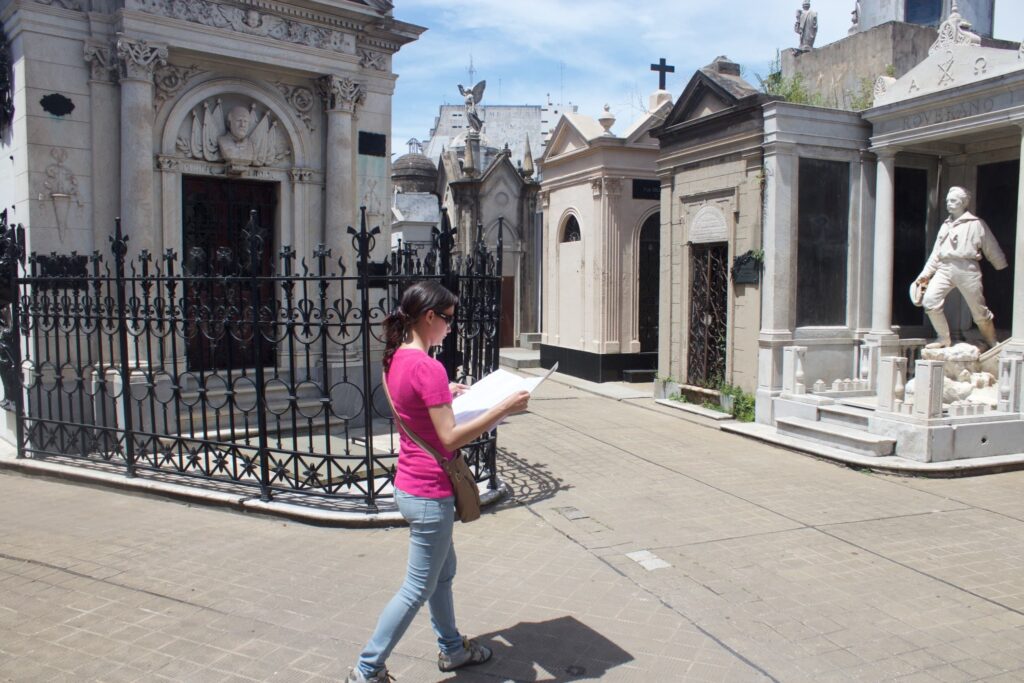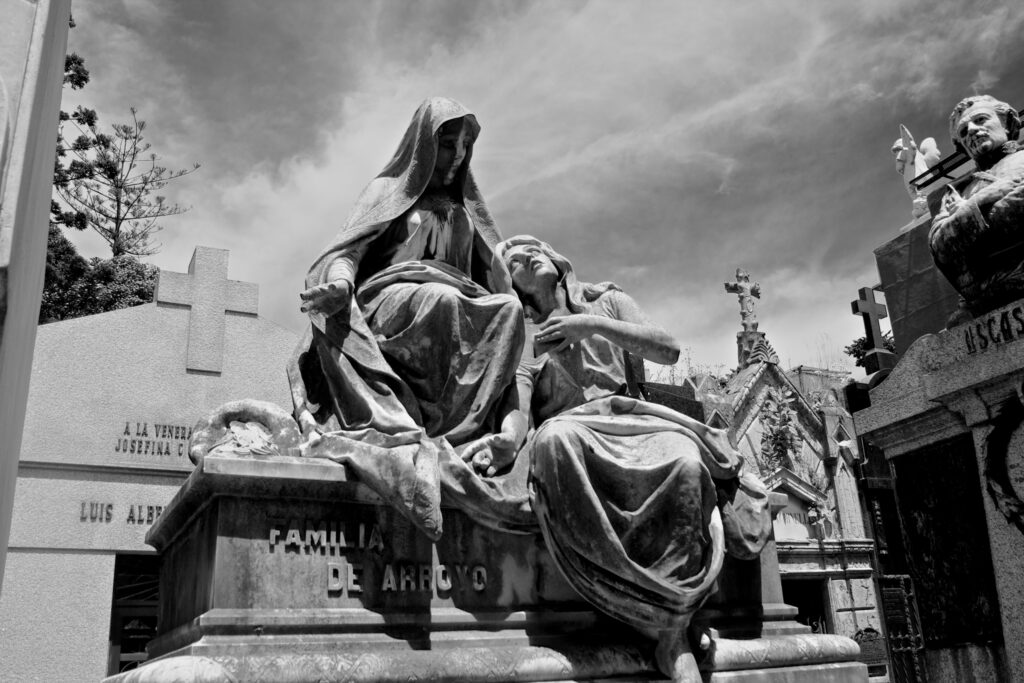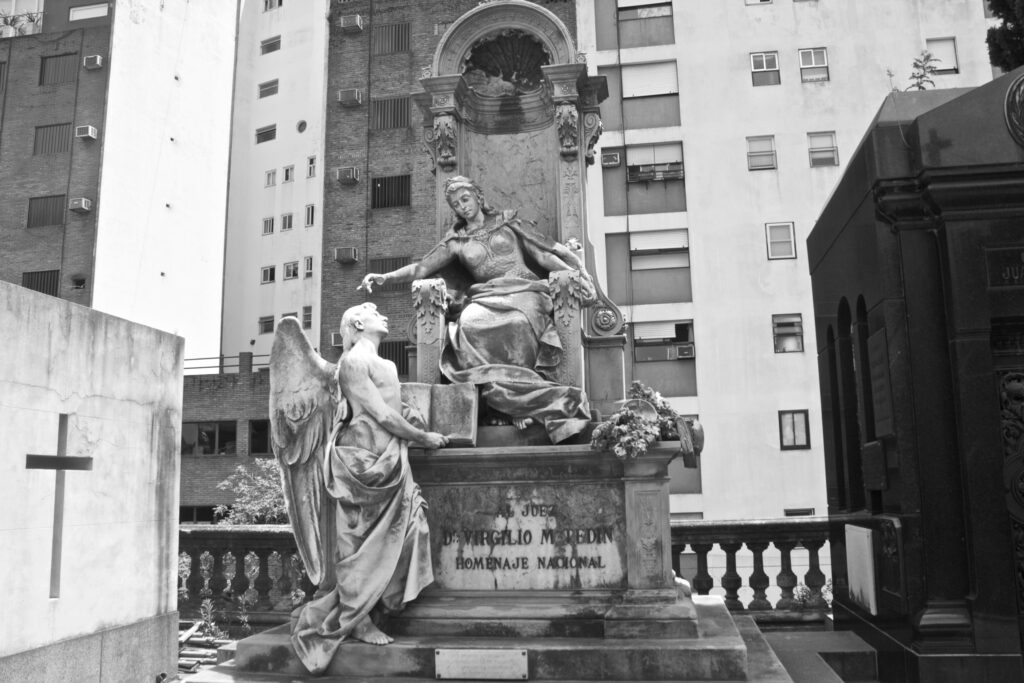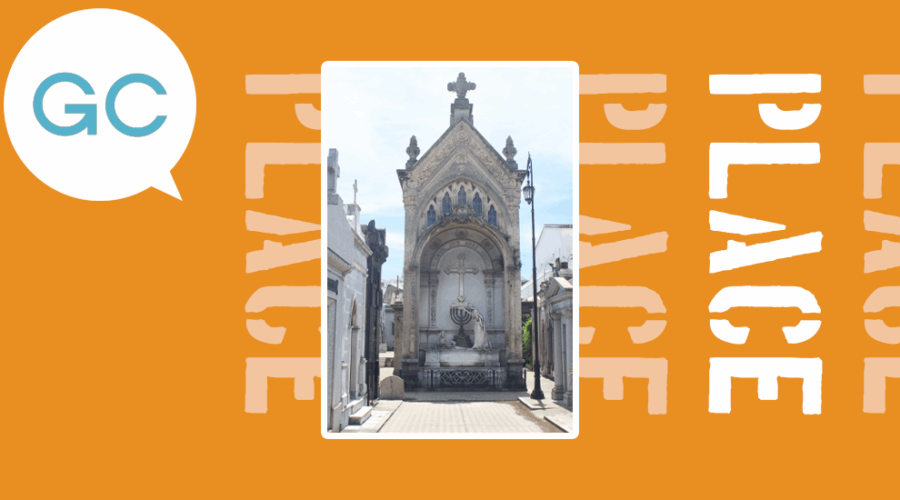Designed by French architect Próspero Catelin and inaugurated in 1822, the cemetery holds nearly five thousand vaults, many of which have been declared National Historic Monuments. Walking its paths is like tracing the footsteps of presidents, independence heroes, Nobel laureates and writers who helped shape Argentina.
Among the many buried here are Eva Perón, Luis Federico Leloir, Victoria Ocampo and José Hernández.
Greek columns and illustrious souls

As soon as visitors pass through the Doric-style gateway, they’re greeted by Latin inscriptions and allegories representing life and death.
Declared a National Historic Museum in 1946, the site spans over fifty thousand square meters. Its narrow alleyways, rich in stories, connect mausoleums that narrate tales of tragedy, love and triumph.
Interestingly, Recoleta Cemetery lost its status as sacred ground in 1853 when the burial of a Freemason was permitted — prompting the Church to withdraw its blessing. Still, the cemetery remains deeply spiritual, a site where sacredness and artistry coexist in a unique balance. The Duarte family tomb, where Evita Perón rests, is one of the most visited and is often covered with flowers, letters and prayers.
Walking through this cemetery felt like visiting a museum without walls
The cemetery also holds notable figures like Carlos Saavedra Lamas (Nobel Peace Prize, 1936) and Luis Federico Leloir (Nobel Prize in Chemistry, 1970), along with 25 Argentine presidents and over 200 independence heroes.
Recoleta, then, is more than a final resting place —it’s a stone archive of Argentina’s national memory.
When death tells stories

What truly sets Recoleta apart from other cemeteries around the world is its ability to inspire stories. Each grave holds a tale, and many have given rise to legends that feed the site’s mystery. Like the story of Rufina Cambaceres, a high-society young woman who was allegedly buried alive after suffering a cataleptic episode. Or David Alleno, a cemetery caretaker who, legend has it, ended his own life just to “inaugurate” his own tomb.
Some sculptures even reflect the personalities of those buried. The tomb of the Del Carril couple shows the two spouses with their backs to each other, symbolizing a silence that lasted beyond death. Or the statue of Liliana Crociati, embraced by her dog Sabú —the only pet sculpture in the cemetery. She died during her honeymoon, and a mysterious visitor still leaves fresh flowers at her grave.
And then there’s the most macabre story of all: Próspero Fernández Alvariño, who decapitated the body of Juan Duarte, Evita’s brother, to prove he hadn’t died by suicide. Rumors say he used the skull to intimidate his subordinates in the police.
Between what’s seen and what’s hidden

Some publications have ranked Recoleta among the most beautiful cemeteries in the world, alongside Père Lachaise in Paris and Staglieno in Genoa.
But what truly makes Recoleta unique isn’t what you see; it’s what lingers beneath: the whispers floating between mausoleums, the anonymous flowers, the quiet rituals performed by visitors.
Curious travelers will find more than a history lesson here. They’ll find a parallel city of marble and bronze that continues to speak to the present.
This cemetery isn’t a place for death — it’s a place to be remembered
Perhaps that’s why Jorge Luis Borges, though ultimately buried in Switzerland, once expressed his wish to rest in Recoleta alongside his ancestors.
He understood that this cemetery isn’t a place for death — it’s a place to be remembered.
A cultural and spiritual experience
Today, Recoleta has become an essential stop for anyone visiting Buenos Aires. Open daily from 7 a.m. to 6 p.m., it can be explored on guided tours or independently. Every corner offers a photogenic angle, a hidden story or a work of art to admire. An official map is also available to help you locate the most iconic tombs.
Among the many literary figures buried here are Adolfo Bioy Casares, Victoria Ocampo, Miguel Cané and José Hernández. Literature, like history and politics, finds in Recoleta a place to rest and endure. Some mausoleums are architectural gems, crafted by the finest sculptors of their time and adorned with materials that would be priceless today.
Personally, walking through this cemetery felt like visiting a museum without walls; a space where emotions, ideas, and memories remain alive among silent sculptures.
Recoleta is not just a place for eternal rest. It’s a mirror of Argentine history, a testament to greatness, tragedy and the quiet gestures of humanity that echo through time.
Images: Edgary Rodriguez R.

